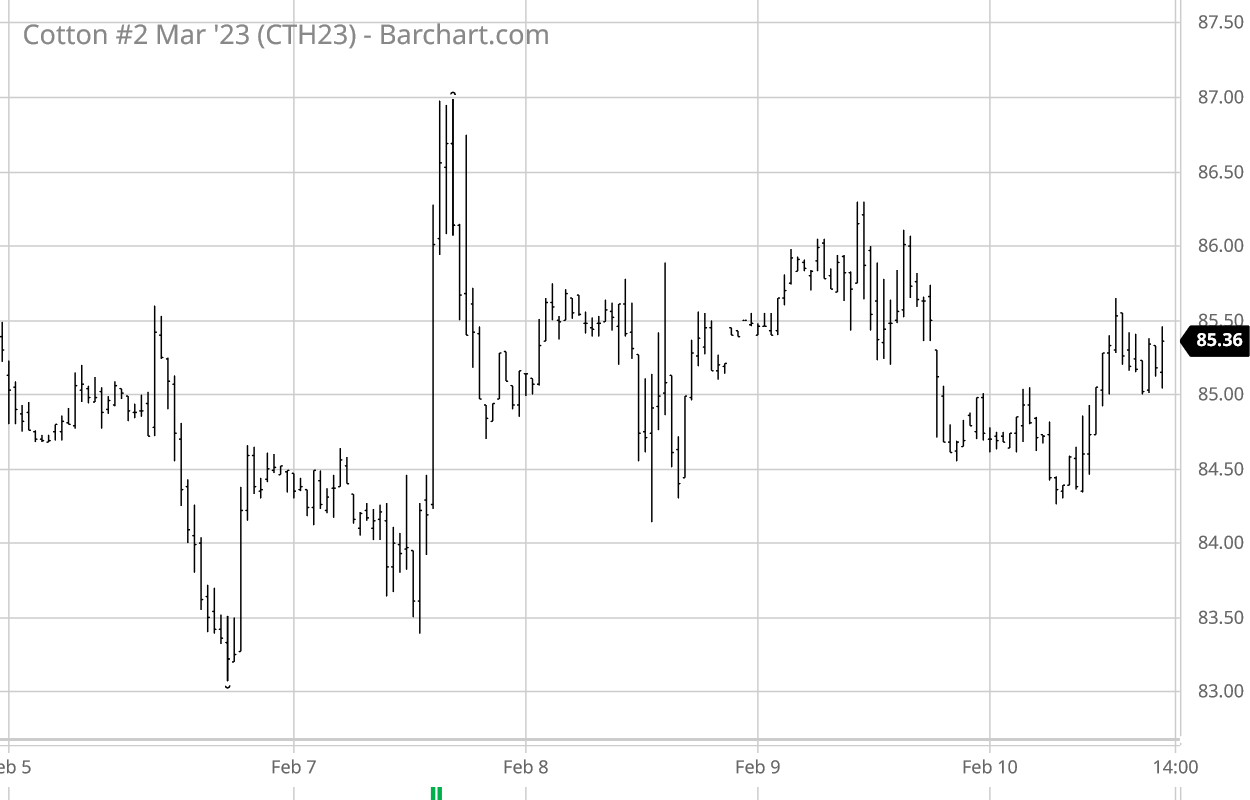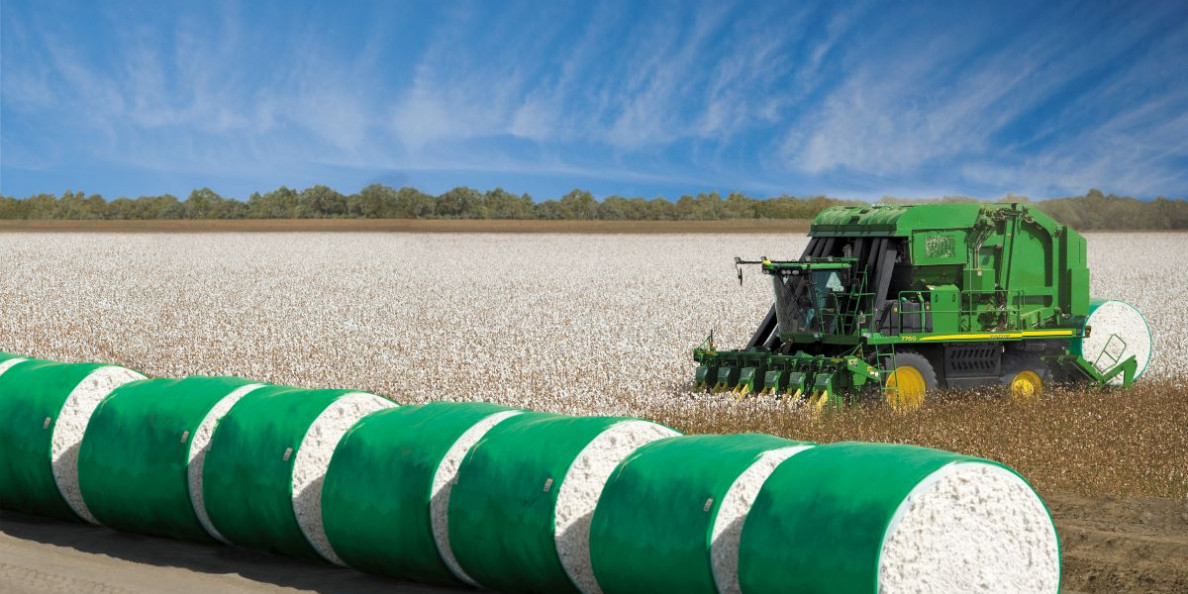For the week ending Friday, February 10, ICE cotton futures gyrated in a sideways pattern around the well established mid-80s level (see chart above courtesy of Barchart.com). The nearby Mar’23 contract settled for the week at 85.27 cents per pound, while the new crop Dec’23 settled at 84.86 cents. Chinese cotton prices were flat-to-lower across the week, as was the A-Index of world prices.

Cotton-specific influences this week included neutral/bearish cotton supply and demand revisions. USDA’s weekly summary of the U.S. market reflected reflected a mix of inactive (Delta), moderate (Southeast) to active (Texas) spot physical trading, along with varying levels of reported demand. The pace of weekly U.S. export sales remained strong for the fourth week in a row, while actual export shipments remained below the needed weekly average (albeit seasonally in the ballpark). The impact of the extensive earthquake damage in southeastern Turkey remains to be seen on the supply and consumption of cotton in that country.
ICE cotton futures open interest mostly declined across week, while price settlements were mostly flat. The most recent of speculative positioning (through January 24) was bullish looking with 6,259 more hedge fund longs coupled with 4,780 fewer hedge fund shorts, week over week. The index fund net long position shrank 1,710 contracts compared to the previous week.
Similarly to ICE cotton, CBOT corn and soybean futures followed a sideways pattern this week. KC wheat futures were flat to slightly higher. The U.S. dollar index showed a gyrated sideways patterns that might appear as the bottoming out of a four month slide.
For more details and data on Old Crop and New Crop fundamentals, plus other near term influences, follow these links (or the drop-down menus above) to those sub-pages.


